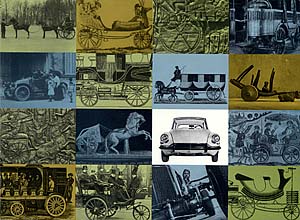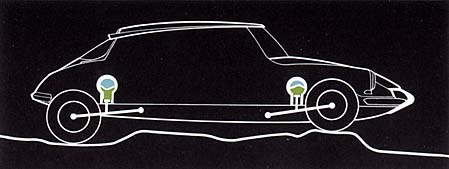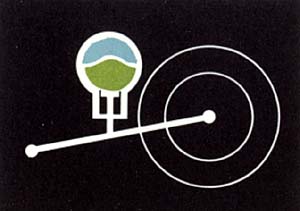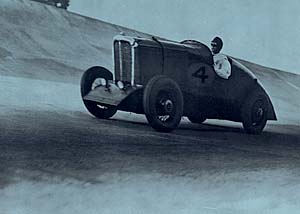|
||||||||||||||||||||||
 |
A SHORT HISTORY OF SUSPENSIONPart Eight |
|
On the CitroŽn
DS 19 or ID 19, each of the independent wheels is connected to the body
by a lever arm, integral with a piston. This piston acts, in a
cylinder, on the hydraulic fluid, which compresses, to a varying
degree, following the action of the piston, a constant mass of gas in a
suspension sphere located above the cylinder and fixed on the body.
These spheres do not contain ordinary air as in the majority of other
so-called pneumatic suspensions, but an inert nitrogen-gas. A perfectly
tight rubber diaphragm separates the nitrogen from the hydraulic fluid,
while at the same time allowing considerable changes in volume, owing
to its elasticity. Any vertical movement of the wheel acts on the
piston, which discharges the transmission fluid into the cylinder and
the lower portion of the sphere. It thus acts on the separator
diaphragm and decreases the volume of gas to a varying degree following
the initial movement of the wheel. The gas then reacts in accordance
with the inherent properties of pneumatic springs, i.e. with great
flexibility. |
|
 |
|
|
If the gas volume is decreased by half in this way, its pressure is doubled. If it is divided by four, the pressure quadruples. It can be seen that the flexibility of the nitrogen sphere decreases very sharply with a reduction in volume. The hydropneumatic suspension is of the decreasing flexibility type (decrease in flexibility with an increase in load). Also, the pressure can be controlled by varying the quantity of non-compressible liquid. The central organ of the system is a high-pressure pump which maintains a controlled circulation in a network comprising a buffer tank, an accumulator and the suspension assemblies, with a return line to the tank. The high pressure pump takes the fluid from the tank and discharges it into the accumulator, via a connector-disconnector (which maintains the accumulator at the correct pressure by opening or closing, as the case may be, the pressurized liquid line from the pump). This assembly constitutes a real hydraulic plant. Why are this plant and this circuit necessary? Because we shall need them to keep the body at all times at the same distance from the ground. The front wheel support arms are connected by a stabilizer bar, as are the rear wheels. In addition to its normal function as a stabilizer, following any changes in load this bar operates a slide valve which immediately reestablishes the balance of the suspension, by adjusting the volume of fluid, either by injecting liquid from the accumulator (slide in intake position in the height corrector) or by discharging to the tank (slide in exhaust position). |
|
|
|
 |
|
|
|
|
|
|
 |
|
|
|
|
The CitroŽn's hydropneumatic suspension possesses all these criteria of the ideal suspension. On account of its permanent and automatic adaptation to circumstances, it achieves this by conciliating an amazing flexibility in a position close to the position of equilibrium, with an ever-efficient shock absorber system. It should be added that the height corrector has been provided with a manual control to enable the driver to increase the clearance at will, on rough ground or to drive over deep snow, for example. This very convenient device also serves to change a wheel and is an excellent substitute for a jack. (The car is placed in its high position, a crutch is placed on the side of the wheel to be changed to maintain this side upraised when the car is lowered to its normal position. The wheel is then changed and the car is placed again in high position to remove the crutch.)
|
|
 |
In the present state of technical progress, the hydropneumatic suspension is undoubtedly the most perfect. It ensures both the comfort and the complete safety of the passengers. But it has an additional and typically CitroŽn characteristic: it is better and it is more than a mere suspension: it is a coherent hydraulic network that ensures the overall safety of lD19 and DS19 and is perhaps a pointer to what the car of the future will be. |
|
|
|

